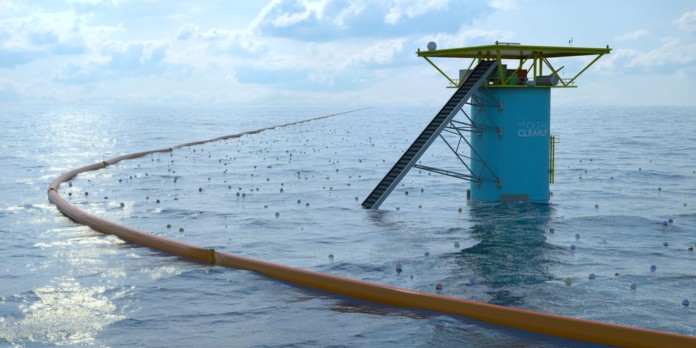Over 5 trillion pieces of plastic currently litter our oceans. Five ocean garbage patches, the largest one is between Hawaii and California, show man’s disdain towards the environment. Fortunately, two technologies – both pioneered by young college students – are in trial stages and offer hope
In 2013 18-year-old Boyan Slat founded The Ocean Cleanup. He now employs 50 engineers and researchers. Instead of going after plastic debris with vessels and nets – which would take many thousands of years and billions of dollars to complete – The Ocean Cleanup is designing a network of extremely long floating barriers that will remain stationary in the water, enabling the ocean to concentrate the plastic using its own currents. One passive system could theoretically remove about half the Great Pacific Garbage Patch in 10 years at a fraction of the cost.
Their logic is – Why move through the oceans, if the oceans can move through you?
Ocean garbage patches are vast but dispersed. By acting like an artificial coastline, the company passively concentrates the plastic completely powered by natural ocean currents. It requires no external energy source. The company states that modular array approach can be applied on any scale; from small-scale systems to intercept plastic near land, to multi-kilometer installations to clean up ocean garbage patches.
Models show that by utilising vast rotational ocean currents, cleanup systems with a combined span
of 100km can harvest almost half the Great Pacific Garbage Patch in 10 years. The founders believe initiating the cleanup by 2020 is achievable. “This is the first solution the size of which matches the size of the problem.”
After many scale model tests and prototyping parts of the system, the firm is now ready to launch the pilot – the world’s first operational ocean cleanup system, scheduled for deployment in late 2017.
“Thanks to research partners including Teledyne Optech, NOARC (National Oceans and Applications Research Center) and ITRES, The Ocean Cleanup has access to the world’s most advanced apparatus to detect the plastic, including LIDAR and Multispectral camera technology,” states a company note.
https://www.theoceancleanup.com/








